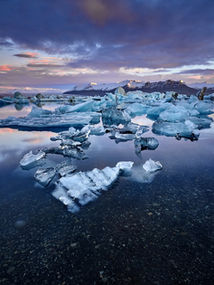Adventure Holidays in Portugal
A Tapestry of Thrills, Culture, and Tradition
Portugal, with its diverse landscapes, rich cultural heritage, and vibrant gastronomy, is a dream destination for adventure holidays. This enchanting country offers a wide array of outdoor activities, unique local experiences, and family-friendly adventures that promise to create cherished memories. Delve into the exhilarating world of adventure holidays in Portugal, where the thrill of the outdoors, cultural depth, and the warmth of its people await.
Our Portugal Adventure Holidays
Things to do ...
Portugal's adventure holidays combine thrilling outdoor activities, rich cultural immersion, and family-friendly experiences to create an unforgettable vacation. As you explore the country's picturesque landscapes, savor its gastronomic delights, and connect with its warm-hearted people, you'll be captivated by the beauty and charm of Portugal. Whether you seek a family retreat, daring escapades, or cultural enrichment, this welcoming destination guarantees an adventure that will leave you with lasting memories.
Places to go ...
Portugal's adventure holidays combine thrilling outdoor activities, rich cultural immersion, and family-friendly experiences to create an unforgettable vacation. As you explore the country's picturesque landscapes, savor its gastronomic delights, and connect with its warm-hearted people, you'll be captivated by the beauty and charm of Portugal. Whether you seek a family retreat, daring escapades, or cultural enrichment, this welcoming destination guarantees an adventure that will leave you with lasting memories.
Outdoor Adventures in Portugal - an outdoor playground on diverse terrain
Portugal's opportunities for trekking and hiking all around the ccountry are sheer endless. Explore the lush green hills of the Azores, venture through the rugged landscapes of the Douro Valley, or hike the famed Rota Vicentina along the Alentejo coast. For more challenging hiking, set off to the stunning Serra da Estrela, Portugal's highest mountain range. This region is known for its exceptional hiking and off-road trails, providing a quieter alternative to popular tourist spots. The Serra da Lousã is wonderful spot for off-beat hiking and to venture through Portugal's history.
Portugal's long coastline and consistent waves make it a top surf destination. Ericeira, Peniche, and the Algarve offer fantastic surfing spots for both beginners and experienced surfers. Many surf schools also cater to families, ensuring everyone can catch their first wave.
Discovering Portugal's charming countryside on two wheels is a wonderful experience, allowing you to fully take in the beauty and traquility of Pirtugal's landscape. The Alentejo and Algarve regions are ideal for cycling tours, offering a mix of natural beauty and cultural exploration. For more challenging cycling, Serra Estrella, Sintra-Cascais or the Arouca Geopark are excellent choices for mountain biking.
Family-friendly Adventures in Portugal - a great time for adults and kids guaranteed
Portugal offers a wide range of family-friendly activities and experiences, so you can be sure that everybody will make the most of their adventure holiday to Portugal.
With it's many nature park and sheer endless coastline, Portugal is a great spot for walking and hiking. The Arouca Geopark, Sintra-Cascais, Parque das Serras de Aire e Candeeiros or Arrabida Nature Park do not only offer gentle hiking options in fantastic scenery, but they also come with a sense of adventure and the possibility to explore Portugal's history and natural heritage.
To learn more about Portugal's marine residents, visit the Lisbon Oceanarium, one of Europe's largest indoor aquariums. It's an educational and entertaining experience for children, with a diverse range of marine life. If you are choosing to visit the Algarve and the Costa Vincentina during your visit, you can chosse from different eco tours taking you along the coastline to explore the geological features and marine life by boat or foot.
Ziplining has become a popular activity in Portugal and thanks to the abundance of nature parks in Portugal, there are some great spots all across the country to experience the fantastic landscape on a thrilling zipline. Arouca Geopark, Peneda-Gerês National Park offer great fun options for the whole family or zipline from Portugal to Spain in Alcoutim!
Local Experiences in Portugal - immerse yourself in culture and traditions
Portugal has a rich cunlinary history, so indulging in some of Portugal's gastronomic delights when visiting is an absolute must. Savor the unique flavors of Portuguese cuisine. Try traditional dishes like bacalhau à brás (codfish), pastéis de nata (custard tarts), and sample local cheeses and wines at farmers' markets.
Portugal is also home to some excellent wines, so a visit to a quinta in the Douro Valley or the Alentejo area is a great way to learn and to taste some of the quality produce in a fantastic natural setting. Port wine is a world-famous product of Portugal and you can delve into the world of Portuguese wines and port wine with a visit to the historic cellars of Porto. Enjoy tastings of port wine, while learning about the wine-making process.
Step into the world of Fado and experience the soul-stirring traditional sounds of Portugal. Visit a Fado restaurant in Lisbon, Porto, or Coimbra for an authentic cultural immersion.
The Alqueva Dark Sky Reserve in Alentejo is a designated dark skies area and one of the world's best places for stargazing. It's a tranquil escape from the city lights and a perfect off-the-beaten-path adventure. A night canoeing tour on the calm waters of Portugal's largest water body is a fantastic off-beat experience.
Get inspired for your next adventure
For more information on Portugal and useful travel tips, please visit our Portugal travel guide and travel bonanza!
Adventure Holidays Destinations



























